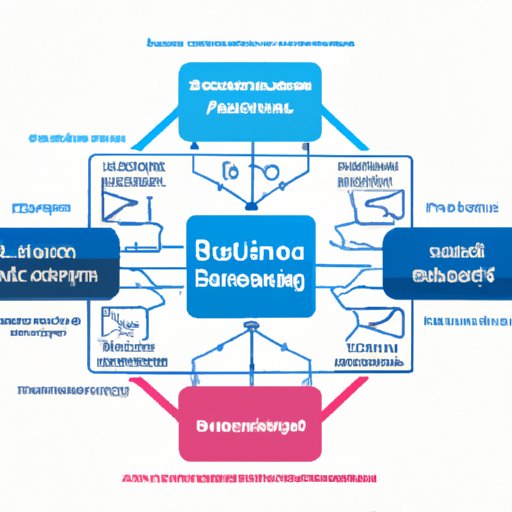Introduction
Business architecture is the practice of analyzing, designing, and implementing the structure of an organization. It’s a systematic way of looking at how an organization works and finding ways to improve its performance. The goal of business architecture is to create an environment where people, processes, and technology work together efficiently to achieve business objectives. By better understanding the organization’s current state and desired future state, business architects are able to provide insight into how to get from one point to the other.
Definition of Business Architecture
According to the Business Architecture Guild, “Business architecture is a blueprint of the enterprise that provides a common understanding of the organization and is used to align strategic objectives and tactical demands.” Business architecture helps organizations identify opportunities for improvement, develop strategies, and make decisions based on data. It enables organizations to view their businesses from a holistic perspective, rather than focusing on individual components. Business architects use a variety of tools and techniques to map out the organization’s current state and desired future state, as well as the steps needed to move between the two.
Why Business Architecture Matters
Business architecture is essential for any organization looking to stay competitive in today’s fast-paced business environment. According to a study by the Economist Intelligence Unit, “62% of senior executives believe that having a clear business architecture is critical for success.” Business architecture helps organizations understand their current state and plan for the future. It enables them to make more informed decisions about their strategies and operations, and ultimately helps them become more successful.
Benefits of Business Architecture
Business architecture offers a number of benefits for organizations. Here are some of the key advantages:
Strategic Decision Making
Business architecture helps organizations make better decisions by providing a comprehensive view of the entire organization. By understanding the relationship between different parts of the organization, business architects are able to identify areas of potential improvement and recommend strategies that will have the greatest impact. This insight helps organizations make better decisions and stay ahead of the competition.
Business Transformation
Business architecture provides a roadmap for business transformation. It helps organizations define their vision and goals, and then map out the steps necessary to achieve those objectives. This helps organizations focus their efforts and resources on the most important initiatives, and ensures that they remain aligned with their overall strategy.
Alignment of Business and IT Strategies
Business architecture allows organizations to align their business and IT strategies. By understanding the relationship between the two, business architects are able to identify areas of overlap and ensure that both strategies are working together to achieve the same goals. This helps organizations maximize the value of their IT investments, and reduces the risk of costly misalignments.

Developing a Business Architecture Framework
Developing a business architecture framework requires careful planning and consideration. Here are some steps organizations should take when developing a business architecture framework:
Steps to Take
- Identify the organization’s goals and objectives.
- Map out the organization’s current state and desired future state.
- Analyze the relationships between different parts of the organization.
- Define the roles and responsibilities of each part of the organization.
- Identify opportunities for improvement.
- Develop strategies for achieving the organization’s goals and objectives.
Tools & Resources Available
There are a variety of tools and resources available to help organizations develop a business architecture framework. The Business Architecture Guild provides a library of best practices, templates, and case studies. Organizations can also use software such as Akana or ArchiMate to create visual models of their business architecture.
Leveraging Business Architecture for Change
Business architecture can be a powerful tool for organizational change. It provides a framework for understanding the organization’s current state and desired future state, and helps identify opportunities for improvement. By leveraging business architecture, organizations can create plans for achieving their goals and objectives, and can measure progress along the way.
Analyzing Role in Organizational Change
Business architecture can help organizations analyze their role in organizational change. It provides insight into how the organization’s strategies and operations are affecting the bottom line. This helps organizations identify areas where they need to make changes, and develop strategies for implementing those changes.
Unlocking Power for Improved Performance
Business architecture can help organizations unlock the power of their data for improved performance. By understanding the relationships between different parts of the organization, business architects are able to identify areas of potential improvement and develop strategies for leveraging data to drive better results. This helps organizations make more informed decisions and stay ahead of the competition.
Conclusion
Business architecture provides an organized approach to understanding an organization’s strategy, processes, and capabilities. It helps organizations identify opportunities for improvement, develop strategies, and make decisions based on data. Business architecture can be a powerful tool for organizational change, providing insight into how the organization’s strategies and operations are affecting the bottom line. By leveraging business architecture, organizations can create plans for achieving their goals and objectives, and can measure progress along the way.
(Note: Is this article not meeting your expectations? Do you have knowledge or insights to share? Unlock new opportunities and expand your reach by joining our authors team. Click Registration to join us and share your expertise with our readers.)
